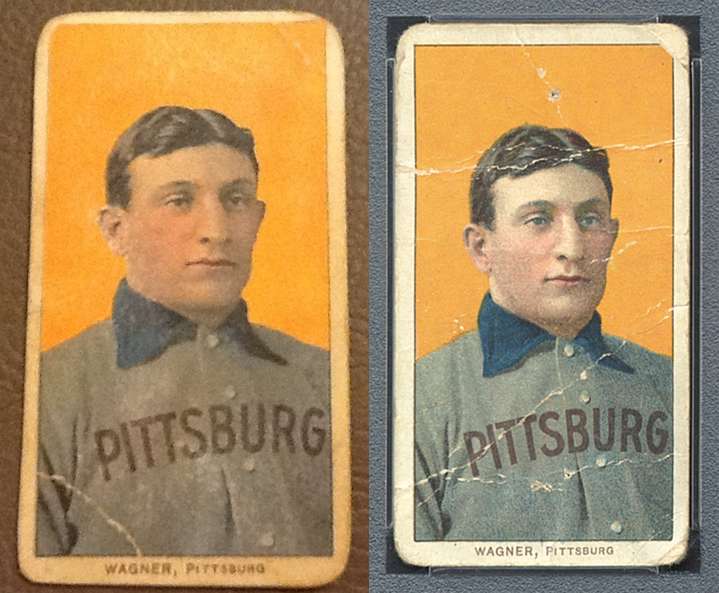Quote:
Originally Posted by the 'stache

Hi Slipk,
There are certainly T206 experts here that will know more than I, as I have only recently started collecting "the Monster", and learning about it. But I have a few things to say, and I'll wait for some of the big guns on the forum to chime in.
First thing, never assume a card is real because it's been slabbed. Unless a card is in Beckett slab, always operate under the assumption that what you're looking at could be a fake. Thieves are counting on you making an assumption that a card slabbed by PSA or SGC is the real deal when they put a fake card in a fake slab, or a fake card in a real slab they've cracked. Always buy the card. Look it over carefully. If you have questions, ask your friends on Net 54. It's always better to ask then to buy something, only to find out later you've been burned.
When considering a card, I always compare it to a known legitimate example. This is what handwriting experts do when verifying the authenticity of a signature.
On the right is a good example from T206resource.com. The one in question is on the left.

The coloring on this one is all wrong. Look at the face on the fake. Also, look at the border surrounding the portrait. The real card has a black border. The fake has a brownish border. The card doesn't pass the smell test. |
Now just to make it a bit less clear and more clear all at once.....
The overall coloring wouldn't necessarily put me off a card. There are some T206s that show differences in coloring.
And the grainy scan could simply be a bad grainy scan. Some sellers simply can't figure out how to have decent scans or pictures.
The borders can be thin on some subjects, and are almost always black or very dark gray, very occasionally they seem brown. The name is usually brown, but can be gray.
So it's often a matter of what's normal for
that particular players card.
That's what makes the galleries at sites like T206 resource valuable. You can see a number of Wagners in decent detail.
In this case, there really aren't any with nearly missing borders, and none with such a large difference in color. So that combined with the grainy scan makes 3 rather large red flags.
As you see more cards, you'll develop a sense of what looks "right" and "wrong" Most people have to think about why a card looks wrong, but the reaction is often correct.
It's easier with a card in hand. So many things will be "wrong" about the fake they will be easier to spot.
The cracked holder with a swapped card either lower grade or an outright fake is a valid concern, and more reinforcement to the "buy the card not the holder" advice.
Steve B